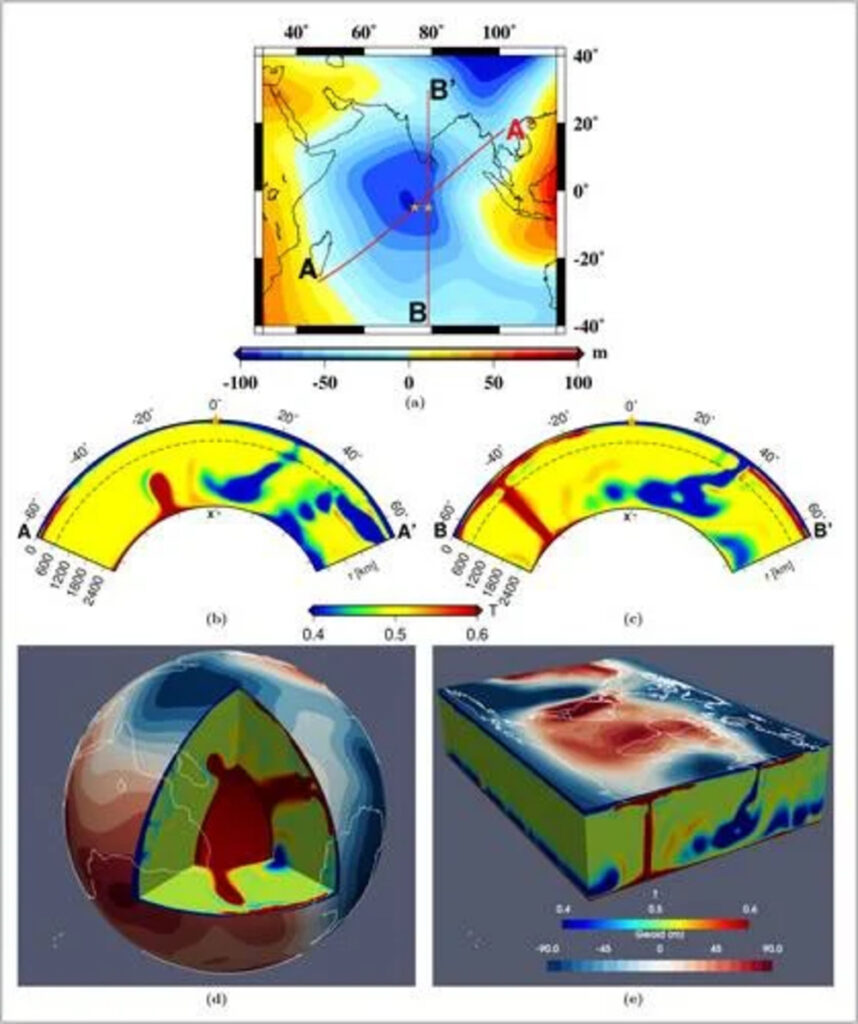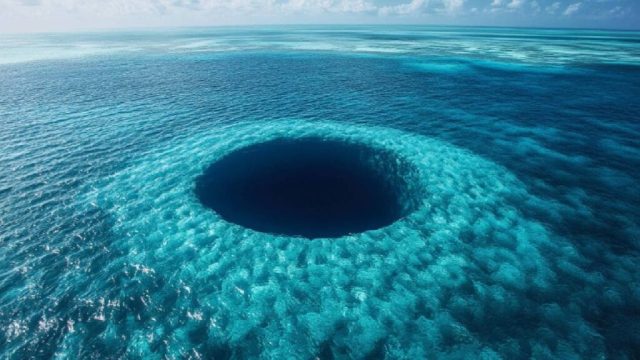The Mysterious Gravity Dip Beneath the Ocean
Deep beneath the Indian Ocean, researchers have discovered an immense gravitational anomaly—a hole in the gravitational field. In this zone, the sea level dips by about 106 meters compared to the surrounding areas, as though an invisible force is pulling the ocean down. This baffling phenomenon, which has captured the curiosity of scientists for years, raises an intriguing question: Why does gravity behave so differently in this specific area?
For years, no one could provide a clear answer. But recent research, published in Geophysical Research Letters, has started to unravel the mystery. The study, which used advanced simulations, suggests that the anomaly could trace its origins back more than 140 million years.
Earth’s Uneven Shape: A Cosmic “Potato”
When we think of Earth, we often picture it as a perfectly round sphere. However, the truth is far more complex. Earth’s mass is distributed unevenly, leading to variations in gravity across the planet. In fact, Earth is more like a cosmic potato—its surface is lumpy, with some areas exerting more gravitational pull than others.
The Indian Ocean Geoid Low is one of the most extreme examples of this gravitational irregularity. For years, theories about its cause, such as the existence of an ancient submerged tectonic plate, failed to hold up. But the breakthrough came from a team led by Professor Attreyee Ghosh at the Centre for Earth Sciences in Bangalore.
Using cutting-edge computer modeling and in-depth seismic analysis, Ghosh and her team identified the cause of this anomaly: an immense upward flow of warm and light materials from the Earth’s mantle. This phenomenon is related to a mantle plume, a column of molten rock that extends beneath Africa and spreads under the Indian Ocean.

A Trace of a Lost Ocean
The story of the IOGL doesn’t end with the mantle’s movement. In fact, the roots of this anomaly may stretch back to a time when India and Asia were separated by a vast ocean. Around 140 million years ago, the Indian plate began its slow migration northward, gradually closing off the ancient ocean. As this ocean disappeared, the oceanic tectonic plate beneath it began to subduct, or sink, into the Earth’s interior. This process triggered the rise of mantle plumes, where less dense magma ascended from deep within the Earth, creating the gravitational dip that we observe today.
To test this hypothesis, the researchers ran 19 different simulations tracking the movements of the Earth’s mantle over time. In six of these simulations, a geoid anomaly similar to the IOGL appeared, supporting the theory that this mechanism plays a crucial role in the formation of the gravity hole beneath the Indian Ocean.
Unlocking Earth’s Ancient Secrets
This discovery sheds new light on the dynamic processes that shape our planet and its internal structures. The findings have significant implications for our understanding of plate tectonics, mantle dynamics, and how these processes affect Earth’s gravitational field over millions of years.
As scientists continue to study this anomaly and conduct further research, we can expect to uncover more about the hidden forces that shape our world. The Indian Ocean Geoid Low is not just a fascinating curiosity; it’s a glimpse into the complex forces that have shaped our planet’s geological history and will continue to do so for millions of years to come.
In conclusion, the discovery of this gravitational hole beneath the Indian Ocean is a testament to the enduring mystery of Earth’s interior. It highlights how much there is still to learn about the forces beneath our feet and reminds us that even the most puzzling phenomena have stories hidden deep in the planet’s past.

















